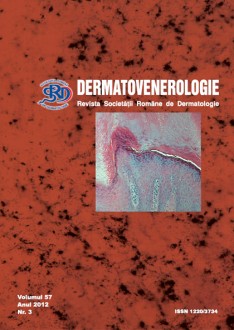Clinical cases
Discussions on a case of ecthyma contagiosum
Ecthyma contagiosum (orf, contagious pustular dermatitis) has been recognized as a occupational disease among those in contact with infected animals or contaminated meat (farmers, butchers, veterinarians). Etiologic agent is a Parapoxvirus.
Most cases occur in males, reflecting the male predominance in occupations or activities of the infected patiens, which include veterinarians, veterinary students, farmers, shepherds. Women are susceptible to infection if they have close contact with animals. Parapoxviruses do not appear to have a predilection for any particular age group. Children may be at higher risk due to behavioral reasons (sustain more animal bites, nuzzling a sick animal), have poorer adherence to good hand hygiene and personal protective measures.
Five to six days after inoculation, the lesions appear as pink or red papules, which is usually 2-3 cm to 5 cm in diameter, firm. Papules evolve into pustules or haemorrhagic bullae with umbilicated centrum and crusted and surrounded by a violaceus ring. The lesions are solitary or few in number. Most common site is dorsum of right index finger.
The diagnosis is based on anamnesis (contact with infected animals) and clinical findings.
We present you the case of a 73 years old men from an urban area, who presented in our clinic with multiple red and firm nodules, surrounded by a white ring, with dimensions between 1,5-0,4 cm, slightly painful, on the right index and on the index and the fourth finger of the left hand. At the local examination we also noted the presence of some excoriations. The lesions appeared 4-5 days ago. The patient owns a house in a rural area where he worked in the garden without protective gloves.
Based on anamnesis and clinical findings, we established the diagnosis of ecthyma contagiosum.


